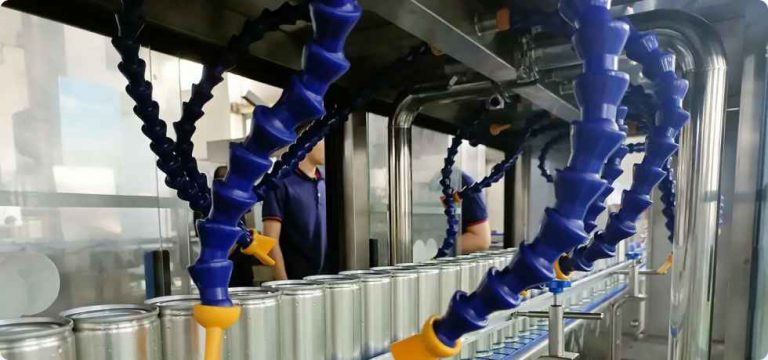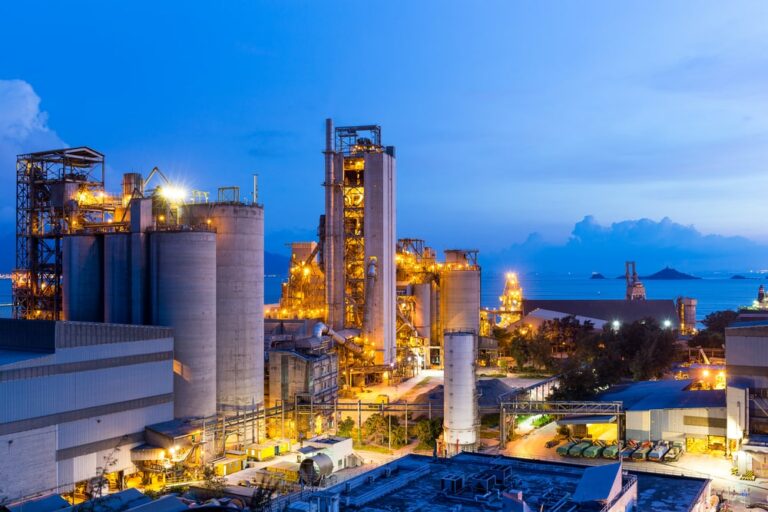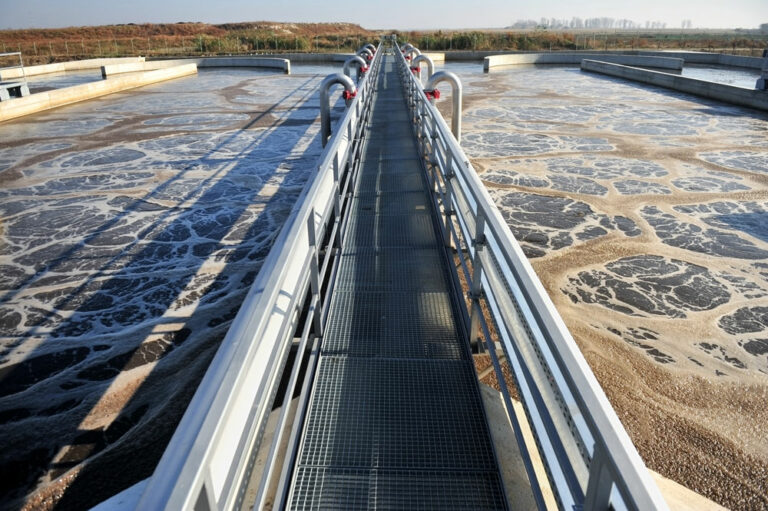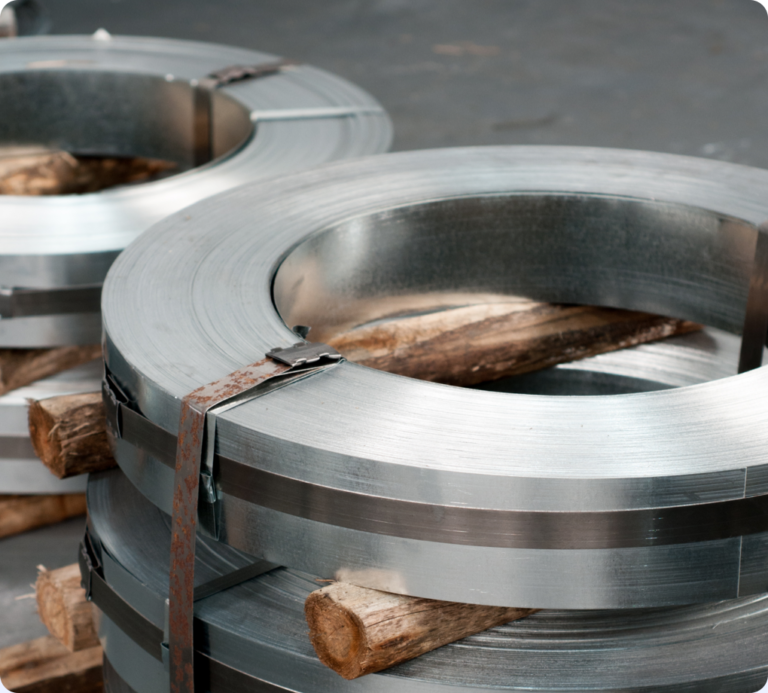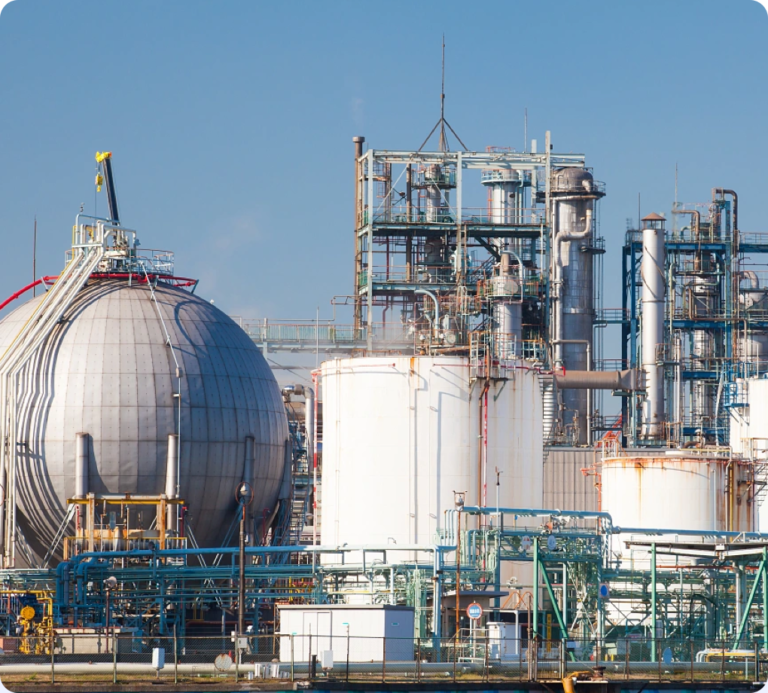Many people is curious about the working principle of the maglev turbo blower:how we make it runs?At first,we need to know one working principle:when we energize the coil, it can produce a magnetic field. air blower portableAccording to the working principle of magnets: same-poles repels and opposite-poles attracts.The maglev bearing is a magnetic induction coil bearing,we set the same-poles of magnet for the bearing coil and the rotating shaft,when the bearing coil is energized,the force of the magnet will float the shaft.The complete working principle of magnetic levitation blower will be like this:
1.when the maglev air blower is connecting with power,the maglev bearing controller will send out current signal,the current amplifier will amplify the current signal and send it to maglev bearing sensor,when the maglev bearing sensor receive the signal,it will send the current to maglev bearing,then the bearing magnet will generate the magnetic field,then the magnetic force will float the shaft.air blower manufacturers
2.The VFD of the air blower is used for controling the motor running speed.When the motor is running,since the motor is connecting with the shaft,and shaft is connecting with impeller,then the shaft and impeller will run.When the impeller is running is high speed,it will generate a vacuum area,and the vacuum area will suck the surrounding air to the impeller,then the impeller will compress the air(at this time,the air will generate dynamic pressure) and discharge it to the outlet pipeline.
3.When the shaft is running in high speed,due to the gravity of the shaft,it will generate vibration and displacement,this will not good for the air blower,since the gap between shaft and maglev bearing is very small,displacement may result in shaft touching with the bearing.So it will require you need a very good software control system in maglev bearing controller.RAETTS maglev bearing controller can guarantee the shaft displacement error within 1um,which is much higher than the peers who can only do it within 10um.
4.In order to protect the maglev blower shaft from damage,we set a protection bearing which is to protect the shaft falling down in full running speed(when there is sudden power failure and the UPS power supply doesn’t work at the same time).
RAETTS is the first one who have the ability to produce the maglev turbo blower and air bearing centrifugal blower.We master the core technology,providing good quality air blower with very reasonable price,helping our customer to save more cost.air blower portable

RAETTS maglev turbo air blowers,air blower manufacturers
RAETTS miniature air foil bearing blower is designed for small sewage treatment plant,such as town STP,street WTP.These type of wastewater treatment plant has very small volume wastewater treatment capacity,only 500m3/day-1000m3/day.This type of small air bearing has the advantages such as compact size design,lower noise up to 65dB,easy installation and mainteance,small footprint.Many customers like to use air pressure blower to replace the heavy and loud noise roots blower.air blower manufacturers
24 months warranty for the whole air blower portable
air blower portable 30% energy saving than traditional air blowers,5% energy saving than the same specifications air blowers
air blower portable Product packing information:1pcs/package
payment info:T/T(30% advance payment,70% before shipment)air blower manufacturers
Selection parameters table
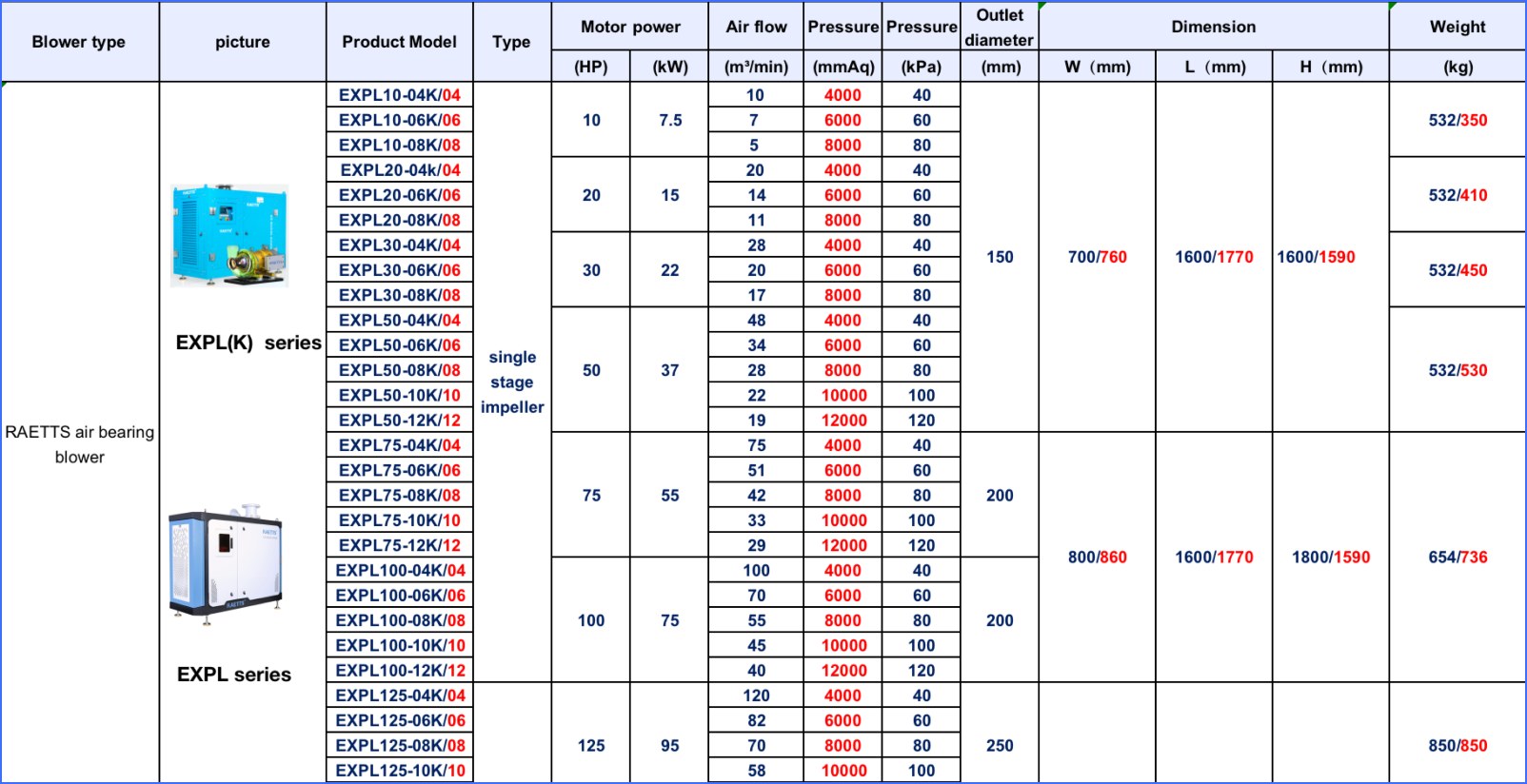
Air blower-An Ultimate FAQ Guide:
2.What are the common applications of an air blower portable?
3.About air blower portable warranty
4.What are the key factors to consider when selecting an air blower for industrial use?
5.About the development history of air blower portable factory
6.What are the different types of air blower portable available in the market?
7.How does an air blower portable work?
8.How to choose the right air blower portable for your specific needs?
9.How Can an Air Blower Benefit Your Home or Industry?
10.What Are the Common Noise Levels Associated with Different air blower portable Models?
11.About air blower portable R&D capabilities
12.About air blower portable MOQ
13.About air blower portable inventory
14.What is the operating temperature range of the air blower?
15.About air blower portable raw materials
16.What material is used for the outer shell of the air blower?
17.How long is the service life of an air blower portable?
18.What are the advantages of using an turbo air blower portable?
19.How to troubleshoot common issues with an air blower?
20.What is the size of the air blower?
1.About air blower portable payment method
RAETTS accept payment by T/T(30% advance payment,70% before shipment)
2.What are the common applications of an air blower portable?
The air blower can be applied for wastewater treatment aeration,pneumatic conveying,sandblaster,combustion support,galvanization,air knife drying,aquaculture oxygenation,fish farming,etc.
3.About air blower portable warranty
RAETTS warranty time for air bearing blower and maglev turbo blower is 24months,for high speed centrifugal blower is 12 months.
4.What are the key factors to consider when selecting an air blower for industrial use?
The decision to choose an air blower for industrial use can depend on many factors. Here are the key factors that should be considered:
Power: Air blowers come with various power ratings, ranging from 0.2 kW to 25 kW, depending on the application. Choosing the right amount of power will help ensure optimal performance of the blower.
Design: The design of an air blower varies according to the application it is meant for. Depending on the need, choosing the right type of blower will help to ensure efficient and productive use.
Connectivity: Air blowers can be connected in several ways. Selecting the correct air blower with the right type of connection like plug type, air-cooled/water-cooled systems, or through a flexible hose is essential.
Durability: Air blowers come in different materials, some of which are cooler and stronger than others. Choosing the right material to suit the job requirements will ensure that the air blower has a longer service life.
Energy Efficiency: It is important to look for air blowers that have the best energy efficiency ratings. A blower with a high rating will consume less electricity and help reduce operational costs.
5.About the development history of air blower portable factory
RAETTS was set up in the year of 2011,the first product is super series high speed centrifugal blower(belt-drive type).The second product is developed in 2014,it is the direct-drive type high speed centrifugal blower,higher efficiency than belt-drive type.Both of this two blowers are used as the air source of the air knife drying systems.The air bearing blower was developed in 2018 and maglev turbo blower was developed in 2019.In 2020,we developed turbo compressor,which is to meet different applications which need higher pressure.
6.What are the different types of air blower portable available in the market?
For the industrial air blower,normally it is including side channel blower(also called ring blower),roots blower(also called lobe blower),single-stage centrifugal blower,multi-stage centrifugal blower,air foil bearing blowers and maglev turbo blowers.
7.How does an air blower portable work?
The main structure of the air blower is including motor,shaft,bearing and impeller.When the motor is running,it will drive the shaft to run,then shaft drive bearing to run,then bearing drive the impeller to run.After the impeller runs,it will generate a vacuum area surrounding the impeller and suck the surrounding air inside.Then the air will be compressed by the impeller and discharged outside.
8.How to choose the right air blower portable for your specific needs?
General speaking,we will do model selection of air blower according to customer’s required air flow,air pressure,application,installation altitude,suction media.
9.How Can an Air Blower Benefit Your Home or Industry?
An air blower is a mechanical device used to generate a flow of air or gas at high pressure. It works by using a motor to drive an impeller or fan, which creates a stream of air that can be directed towards a specific area. Air blowers can have a wide variety of applications, and they can greatly benefit both homes and industries in many ways. Here are some of the main benefits of using an air blower:
1. Ventilation and Cooling:
One of the primary benefits of an air blower is its ability to provide ventilation and cooling. In homes, air blowers can be used to circulate air and improve the overall air quality, which can be especially beneficial for those with respiratory issues or allergies. In industries, air blowers are often used to cool down machinery, preventing overheating and minimizing downtime.
2. Drying and Dehumidifying:
Air blowers can also be used to dry out damp or humid areas in both homes and industries. In homes, they can be used to dry out wet carpets, floors, and furniture after cleaning or flooding. In industries, they can help to reduce the humidity levels, which can not only improve the working conditions for employees but also prevent damage to equipment and products.
3. Dust and Debris Removal:
Air blowers can be used to blow away dust and debris on surfaces, making them useful for both homes and industries. They can be used to clean off surfaces such as floors, furniture, and machinery, making them especially useful in factories and workshops where dust and debris can accumulate quickly.
4. Aeration:
In industries such as wastewater treatment, air blowers are used to provide aeration, which is the process of introducing air into a liquid to increase oxygen levels. This promotes the growth of helpful microorganisms that help to break down organic matter and purify the water.
5. Pneumatic Conveying:
Air blowers are often used in industries for pneumatic conveying, which is the process of moving materials such as powders, granules, and pellets through pipelines using air or gas. This is a cost-effective and efficient way to transport materials, and it is commonly used in industries such as food processing, chemical processing, and pharmaceuticals.
6. Process Cooling:
In industries such as manufacturing and food processing, air blowers are used to provide process cooling, which involves blowing air onto a product or a specific area to cool it down. This is essential for maintaining the quality of products and preventing damage caused by high temperatures.
In conclusion, an air blower can greatly benefit both homes and industries by providing ventilation, cooling, drying, dehumidifying, dust removal, aeration, and process cooling. They are versatile and can be used in various applications, making them an essential tool for many different industries. If you are considering investing in an air blower, be sure to research the different types and models available to find the best one for your specific needs.
10.What Are the Common Noise Levels Associated with Different air blower portable Models?
The noise levels associated with different air blower models depend largely on the size and operating speed of the blower. Smaller blowers tend to be quieter than larger ones. Generally, blowers with higher operating speeds will produce more noise than those running at lower speeds.
Centrifugal blowers tend to be the loudest of the three main types of air blowers. An air blower model with a 2-5 horsepower rating typically produces between 60 and 85 dB(A). Larger models with 5-10 horsepower ratings can usually produce between 75 and 100 dB(A).
Axial flow blowers are typically quieter, with an air blower model with a 2-5 horsepower rating usually producing between 50 and 75 dB(A). Models with 5-10 horsepower ratings usually produce between 65 and 90 dB(A).
Regenerative blowers are the quietest of the three main types of air blowers. An air blower model with a 2-5 horsepower rating usually produces between 45 and 70 dB(A). Models with 5-10 horsepower ratings usually produce between 55 and 85 dB(A).
It is important to note that noise levels associated with air blower models can vary significantly based on the design of the blower, the efficiency of the motor, and the environment in which it is operating. For instance, more efficient motors tend to generate less noise, and the noise levels generated by a blower can increase when it is operated in an environment with poor ventilation.
11.About air blower portable R&D capabilities
RAETTS R&D team has more than 20 people,the chief team leader worked for BYD before,and the technique of whole team is supported by Xi’an Jiaotong University.
12.About air blower portable MOQ
Normally our MOQ for air blower is 1 set
13.About air blower portable inventory
For air bearing blower and maglev turbo blower,RAETTS doesn’t make stock,only produce air blower according to customers order(since different application site may need different designs).For high speed centrifugal blower,RAETTS makes stock.
14.What is the operating temperature range of the air blower?
The operating temperature range of an air blower varies depending on the type and size of the blower. Generally, air blowers can operate at temperatures ranging from 40°F (4.4°C) to 250°F (121°C).
Smaller air blowers, such as those found in computers and electronic systems, operate within a much smaller temperature range. These systems typically run between 0°F and 140°F (-17.7°C and 60°C).
Large air blowers, such as those used in industrial or commercial settings, have a much wider operating temperature range. These systems can handle temperatures up to 500°F (260°C). At these temperatures, it is critical to monitor both the air blower and the actual output to ensure the system is not overworking or underperforming.
When designing an air blower system, it is important to select components that are rated for the particular operating temperature ranges. Components made out of materials that can withstand high temperatures, such as nickel-plated brass or stainless steel, are typically best suited for long-term use.
Since air blowers are intended for use in various temperature extremes, it is important to account for any potential changes during operation. Increases in air temperature can lead to decreased performance, while decreases in air temperature can result in decreased output.
Furthermore, all air blowers should be operated within a safe range of temperature to avoid any potential damage to the blower or the surrounding environment. For this reason, regular monitoring of the system should always be conducted to ensure the health and safety of everyone involved.
15.About air blower portable raw materials
RAETTS air blower impeller in made of aluminum alloy,enclosure material is carbon steel,rotor material is cast iron.If customers need other special materials,we can also customized according to customers requirements.
16.What material is used for the outer shell of the air blower?
The outer shell of an air blower is typically made of a variety of materials, depending on its intended use. For example, some air blowers are designed specifically for a particular environment and require a specific shell material to protect it from corrosion and wear.
For instance, a commercial air blower used in the automotive industry might be made from stainless steel or other metals that can withstand extreme temperatures, while a laboratory air blower used for scientific experiments may be made out of aluminum.
For applications where an air blower is expected to operate in outdoor or wet conditions, polyester or heavy duty polyvinyl chloride (PVC) is usually the shell material of choice. These synthetic materials are waterproof, durable, and resistant to corrosion, making them a popular choice for protecting air blowers that are exposed to the elements.
For long life, air blowers made with a plastic shell are often reinforced with aluminum or steel to ensure a rigid, lightweight housing. Plastic also provides insulation against heat and sound, making it a great choice for air blowers that will be used in high-noise areas.
Finally, some air blowers feature housings made from a composite material, which combines plastic and metal together to offer a lightweight, yet rugged construction. This combination makes a composite shell ideal for air blowers that are required to operate in wild environments or under extreme conditions.
Regardless of whether a air blower features a metal, plastic, or composite shell, all of these materials offer protection for the delicate components within, helping to ensure reliable performance in any environment.
17.How long is the service life of an air blower portable?
The service life of an air blower can vary greatly depending on how it is used and maintained. Generally speaking, the life expectancy of an air blower can range from 10 to 20 years, but it can be extended significantly with proper maintenance.
One of the most important elements to ensuring the life of an air blower is proper installation. Before installation, it is important to consult with the manufacturer and ensure that the installation environment is adequate and not overly humid or dry. If the air blower is going to be exposed to any sort of corrosive or caustic atmosphere, additional measures such as protective coatings should be taken to reduce the potential for damage.
Regular maintenance is essential when it comes to air blowers. It is recommended that all filters be checked and changed every 6 months, and that any loosened mounting hardware should be re-torqued. Additionally, oil and grease should be applied to any moving parts to help reduce friction and extend its life.
The air blower should also be regularly inspected to ensure that the blades, bearings, and motors are undamaged and working properly. If any part of the air blower is not functioning correctly, it should be serviced immediately to ensure that it continues to operate efficiently and not risk any further damage to the machine.
Finally, it is important to note that the life of an air blower can be drastically reduced if it is misused or overworked. It is important to always use the blower within the limits recommended by the manufacturer to ensure that it has the proper service life. By following these recommendations, an air blower should last for at least 10 to 20 years, depending on the environment and how well it is maintained over time.
18.What are the advantages of using an turbo air blower portable?
Comparing with tradition roots blowers,single-stage blowers and multi-stage blowers,turbo blowers effciency is 20%-30% higher,which means using an turbo air blower can help customer to save about 20-30% energy,and then reduce the eletric cost.
19.How to troubleshoot common issues with an air blower?
1. Check the power supply: Make sure the proper voltage is being supplied to the air blower and that any wiring is properly connected and secure.
2. Check the air filters: Check the filters inside the blower for any dirt or debris that may be blocking air flow. If the filters are dirty, clean them with compressed air or a soft brush.
3. Inspect the fan: Check the fan blades for any damage or distortion which could be causing sub-optimal performance and possibly even noise. If the blades are damaged, replace them with new ones.
4. Check the exhaust port: Check the exhaust port for any blockages that could be restricting airflow.
5. Run a diagnostic test: If the air blower isn’t working correctly, try running a diagnostic test to identify any potential errors. Depending on the model of the machine, this may be done with a computer diagnostic tool or a battery or electric screwdriver.
6. Lubricate the air blower: If the blower is not getting any air flow, check the motor to ensure that it is lubricated properly.
7. Inspect the belts: Check the belts that drive the blower to be sure that they are tight and not worn or frayed.
20.What is the size of the air blower?
The air blower size and power depend on the application for which it is used for. Generally, midsize air blowers range from 3-4 to 7-8 horsepower (hp) for small workshops. For large workshops and industrial applications, air blowers with a power of 10 to 20 hp are used. The size of the air blower also depends upon the amount of air flow it needs to generate. Low-power air blowers have a capacity of 100 CFM (cubic feet per minute) and high-power air blowers can range from 600 to over 5,000 CFM.
In addition to the horsepower and air flow measurements, the size of the air blower is determined by its structural dimensions. It includes the width, length, depth and height. Though, small and large air blowers have the same horsepower and air flow, the frame sizes vary. Smaller, more compact blowers are typically more maneuverable and are ideal for operations where space is limited. This makes them more desirable for professional mechanics, hobbyists, and woodworkers. Medium-size air blowers have larger frames, providing higher airflow but have limited maneuverability. This makes these blowers more suitable for large workshops and industrial applications.
The size of the air blower also depends upon its efficiency and portability. Smaller air blowers are lightweight and more efficient in terms of energy consumption compared to larger models. This is the reason why mechanical workshops prefer smaller air blowers as they can be easily placed and adjusted in tight spaces. On the other hand, large blowers require large wall outlets and a large area of operation. Their motors also require more power, which is reflected in their greater energy consumption.

